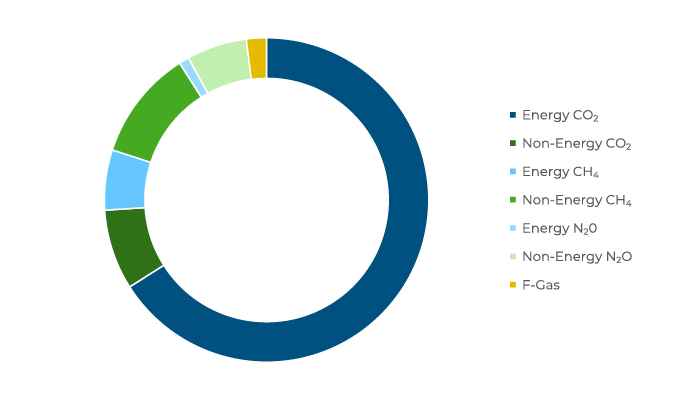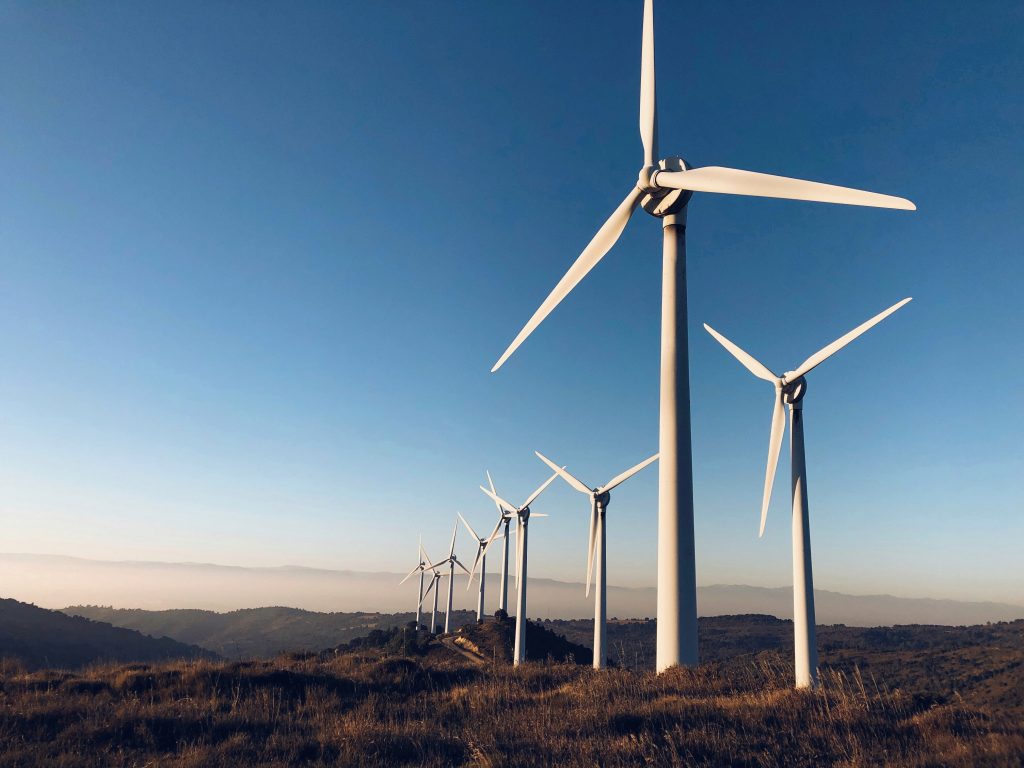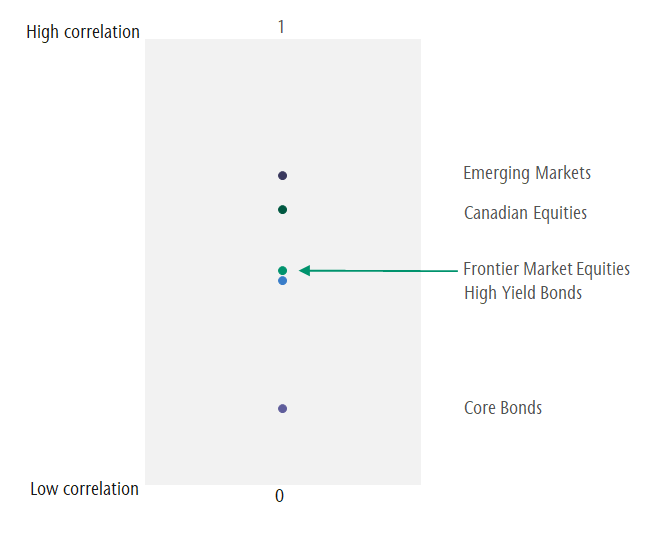
Rising temperatures, driven by escalating levels of greenhouse gases (GHGs) in our atmosphere, cast a looming shadow over our planet’s future. The consequences of inaction could be dire, inflicting an environment of physical and economic peril. The root cause of the issue is human activities, principally the emission of carbon dioxide (CO2) from burning fossil fuels. The gravity of the situation has garnered global attention, prompting governments around the world to commit to reducing GHG levels in a collective effort to curb the rise in the earth’s temperature.
The solution to this unprecedented challenge extends beyond government pledges and public policy. Success also requires the support and proactive engagement of businesses, investors and individuals. Energy transition is an essential component in tackling climate change, involving a shift from the reliance on fossil-based systems, such as oil and coal, to renewable alternatives like wind, solar and large-scale energy storage technologies. The shift toward less carbon-intensive energy solutions will be integral to any climate change action plan. This article provides background on the issues, and the role of energy transition in the broader climate change context.
Understanding GHGs: The underlying cause of global warming
The climate change action plan is mostly focused on combating energy-related CO2 GHGs in the atmosphere, as they represent the majority of GHG emissions (Figure 1). These CO2 emissions are largely attributed to the fossil fuels that generate our electricity, heating and cooling and power our transportation. Other energy-related emissions include methane (CH4) and nitrous oxide (N2O), while the remaining non-energy related GHGs are primarily associated with agriculture.
Figure 1 – Global GHG emissions

Source: Climate Watch, World Resources Institute (2016).
It is important to appreciate that GHGs are not necessarily a bad thing. In fact, they function as a thermal blanket warming the earth and are crucial to human survival. Without GHGs, our planet would be uninhabitable. However, rising levels of GHGs limit the effectiveness of the thermal blanket and are the underlying concern of global warming, and the reason for the focus on combating energy-related CO2 emissions.
Energy transitions through the ages
Historically, energy transitions have been lengthy processes driven by the twin forces of economic growth and increasing energy demand. The first major transition was in the 1800s, which experienced a switch from traditional biofuels (primarily wood) to coal and took over a century to unfold. The mid-1970s heralded another notable change with the development and adoption of refined oil products. For the next 30 years, fossil fuels were the key energy source until the recent two decades when there was a greater reliance on natural gas.
These past transitions were motivated by economic prosperity and the implied increase in energy consumption across both developed and developing countries. The current energy transition is different and more complex. The success of the current global energy transition depends on its ability to ensure energy access for economic growth and development, while simultaneously tackling decarbonization to mitigate climate impact.
Broader threat of climate change
Early literature on climate-related impacts often focused on environmental risks, but the negative consequences are much broader, encompassing both physical and transition impacts that extend to communities, businesses, financial markets and individuals.
Longer-term shifts in weather patterns from climate change are leading to an increased frequency and severity of extreme events like storms and flooding. These events can cause damage and disruption to homes and businesses, in addition to financial ramifications, such as higher insurance costs. To varying degrees, most industries are expected to be affected by the risks from climate change, facing direct and indirect financial challenges due to physical damage, operational interruptions and supply chain disruptions. The Bank of England has also highlighted how climate-related impacts pose a serious threat to financial system stability because of their extensive nature and widespread exposure of financial institutions and asset owners.
The broader threat of climate change has made governments worldwide recognize the need to be instrumental in driving behavioural changes and supporting the energy transition. Initiatives like the 2015 Paris Agreement set long-term goals for reducing GHGs, with governments increasingly using economic incentives and regulations to encourage the move away from fossil fuels. Unlike the concerted global response to the COVID-19 pandemic, the response to climate change lacks uniformity due to varied economic, political and social factors in different global regions. However, greater coordination will be necessary to mitigate and manage the threat implied by global warming.
Risk and opportunities in energy transition
Risks and opportunities are often discussed as if they are opposites. However, they are not necessarily opposing concepts since an opportunity can help manage a particular risk. This is the situation when it comes to climate change and the role of energy transition. Energy transition opportunities can affect all asset classes and sectors, but the most significant opportunity is expected to come from infrastructure strategies that can deliver low-carbon solutions.
The move away from an energy system reliant on fossil fuels and towards cleaner, renewable sources of power will require trillions of dollars of investment and may be one of the largest and most significant investment opportunities of the coming decades. It is expected that annual investment in the energy transition sector, currently around US$1 trillion, will need to average more than 3x this level for the rest of this decade.*
The magnitude of the additional investment will fuel growth in the opportunities across a spectrum of infrastructure assets and businesses for many years to come. The obvious infrastructure solutions will include developing and building clean energy projects. However, due to the significance of the climate change challenge, it will be necessary to encompass a much broader universe of assets, including the enablement of infrastructure solutions, as well as the decarbonization of existing infrastructure.
Develop and build cleaner energy
For low-carbon infrastructure solutions, the natural opportunities include developing and building renewable clean-energy projects, such as wind, solar and run-of-river hydro. Recognizing the importance of the other pillars in addressing climate change, renewable energy solutions narrowly retained their position as the largest sector in 2022.*
Implement sustainable solutions and enable infrastructure
The energy transition will extend well beyond basic energy systems and necessitate the implementation of a range of sustainable solutions – ranging from the build out of battery storage systems and electric vehicle charging infrastructure to geothermal heating and cooling systems that are less carbon intensive than conventional gas boilers – to reduce emissions more broadly.
Decarbonize existing infrastructure assets
The other key pillar of the universe of assets is the decarbonization of existing infrastructure, which requires a hands-on and active approach to transitioning assets away from carbon-intensive business models and towards greener alternatives through strategies, such as changes to production processes, the electrification of systems, the adoption of cleaner fuel sources and the use of carbon capture and storage. One example would be to fund the electrification of a transportation fleet. Another potential investment would be in the transformation of a gas-powered generation asset, where it would be possible to blend, and ultimately replace, the natural gas feedstock with green hydrogen to produce low, and eventually no, carbon base-load electricity.
Energy transition cannot be successful without funding and leadership from owners to drive the transformation of existing infrastructure assets. While some investors may have broad-based exclusions to entire sectors, such as coal, natural gas or oil, we expect that many may reconsider these positions and move towards a more flexible approach that would allow for some exposure where there is a credible and actionable transition plan underway for the investment.
Seizing the energy transition opportunity
The importance of investing in energy transition-related assets is growing with the urgent need for substantial capital to support decarbonization efforts and meet global climate change objectives. Energy transition infrastructure investments offer institutional investors access to a range of opportunities and with energy transition poised to influence every industry and country, it is imperative for investment committees to appreciate both the risks and opportunities involved, as well as energy transition’s role in addressing climate change.
*Source: Bloomberg NEF, Energy Transition Investment Trends 2023.
Source documents:
Climate change: A primer for investors, LCP, 2021.
Energy Transition 101, World Economic Forum, 2020.
What is Energy Transition, S&P Global, 2020.





